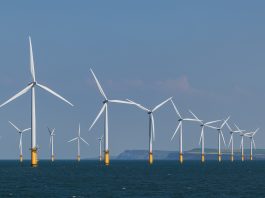As global stakeholders grapple with the urgency of climate change, climate finance emerges as pivotal in navigating the transition to a sustainable future.
Alba Forns Albuixech, COO & Co-Founder of Climatize, and Kristina Lyubomirova Lazarova, Head CEO Office at the Bulgarian National Electricity Company, both EUSEW Young Energy Ambassadors, explore how to bridge the gap in climate finance for a green future.
Almost €185tr is required to deliver net zero by 2050. Despite climate finance having grown consistently over the last decade, we are far behind what is needed to meet the goals of the Paris Agreement.
As the saying goes, ‘We can pay the bill now or pay dearly in the future.’ Let’s see how far we have reached and what stands in our way.
Understanding climate finance
The term climate finance refers to a wide variety of financial instruments distributed to address climate solutions.
These range from grants and loans from large public institutions, such as governments or multilateral funds, to green bonds, carbon taxes, or private funding.
All financial resources are either allocated to mitigate the impacts of climate change or build resilience and adaptation to the new reality we live in.
Although there has been an intensive and rapid allocation of funds, current financial flows must increase at least three-fold to achieve the Paris Agreement targets.
The key challenges include insufficient funding, especially seen in private sector reluctance, global disparities, and transparency issues.
Importance of bridging the gap
70% of the infrastructure investment needed for the low-carbon transition shall be deployed in emerging markets and developing economies that face multidimensional crises, including political and economic instability, corruption, and environmental challenges.
Climate finance flows have grown consistently over the past decade, but they still lag far behind what is needed to meet the goals of the Paris Agreement. It is estimated that €5.7tr of climate finance is required annually between now and 2030 and €6.7tr by 2050 to deliver net zero – a total of almost €185tr.
The actions regarding the effects of climate change on vulnerable communities and ecosystems shall be handled with priority and due justice. As a means to bridge the overarching gap, global cooperation and the role of climate finance in achieving sustainability goals must be strengthened to promote the economic and social benefits of climate action for all.
Key players in climate finance
Climate finance involves several stakeholders that play crucial roles in advancing the agenda on the way to net zero.
On the one hand, international entities such as the United Nations Environment Programme Finance Initiative (UNEP-FI), the European Investment Bank (EIB), and the European Bank for Reconstruction and Development (EBRD) provide blended financial solutions through increased public funding and mobilised private capital flows.
In addition, well-governed, enabling policy frameworks are crucial to help leverage public and private finance into meeting the climate-related pledges. Next, private investors contribute to the climate capital market due to the imposed Environmental, Social, and Corporate Governance (ESG) regulations.
Last but not least, social awareness, engagement, and acceptance are pivotal if we are to meet our goals in the foreseeable future.
Challenges and barriers
Market conditions and legal frameworks are, however, not always set right to foster climate finance.
Political and financial sector misalignment
There are relevant policies and regulations in the financial and corporate sectors; however, they are often ineffective because of piecemeal or lack of coordination.
This leads to misalignments with net zero objectives, impeding an effective mobilisation of public and private finance for climate solutions.
Surge in inequality and global trust erosion
There’s a significant lack of trust between the Global North and South regarding financing for the transition. The failure to fulfil the $100bn pledge made in Copenhagen in 2009 exemplifies strained relations.
Limited climate data and analytics
Gaps in climate data and analytics impede the development of credible transition plans, hindering effective scrutiny and execution of climate finance strategies while opening the door to corporate greenwashing.
Solutions
Public finance needs to unlock private finance by being deployed in an optimised manner and ensuring viability across every stage of development, from R&D to first-of-a-kind (FOAK) projects, public procurement and ongoing subsidies, and concessional funding mechanisms.
Policy needs to catalyse private capital flows transcending short-term political cycles. Laws and regulations must be calibrated to encourage clean energy investments.
The public sector should take the lead in paving the way for the private capital market by directing capital towards crucial decarbonisation technologies that currently lack commercial viability. This includes areas such as carbon capture, nuclear energy, green hydrogen, and industrial sectors like cement or steel.
This entails an expansion of funding mechanisms similar to those employed in the Just Transition Mechanism with the Just Transition Fund. These resources will be utilised to retire and decommission fossil fuel infrastructure, offering current workers financial support and employment opportunities.
Multilateral development banks and development finance institutions must secure additional capital to support these initiatives, directing their funding strategically to leverage private finance and amplify the impact of such programs.
Additionally, a well-informed and accountable ecosystem via investing in climate data infrastructure and transparency via public awareness will foster progress toward global climate goals.
Where do we go from here?
The shift towards an economy that is low-carbon, resilient, and equitable presents the greatest investment opportunity of our lifetime.
Concerted climate action and investment could add a net €20tr to the global economy, equivalent to a rise of up to 4.4% in global GDP by 2070 (relative to business as usual).
Solutions to close the financing gap are complex and multifaceted, ranging from stakeholder alignment, international cooperation, addressing knowledge, and keeping stakeholders accountable.
Institutions well prepared to embark on net zero pathways can leverage decarbonisation-focused policy shifts to become technology innovators and align their practices with ethical and social responsibility standards.
This article is a contribution from a partner. All rights reserved. Neither the European Commission nor any person acting on behalf of the Commission is responsible for the use that might be made of the information in the article. The opinions expressed are those of the author(s) only and should not be considered as representative of the European Commission’s official position.









